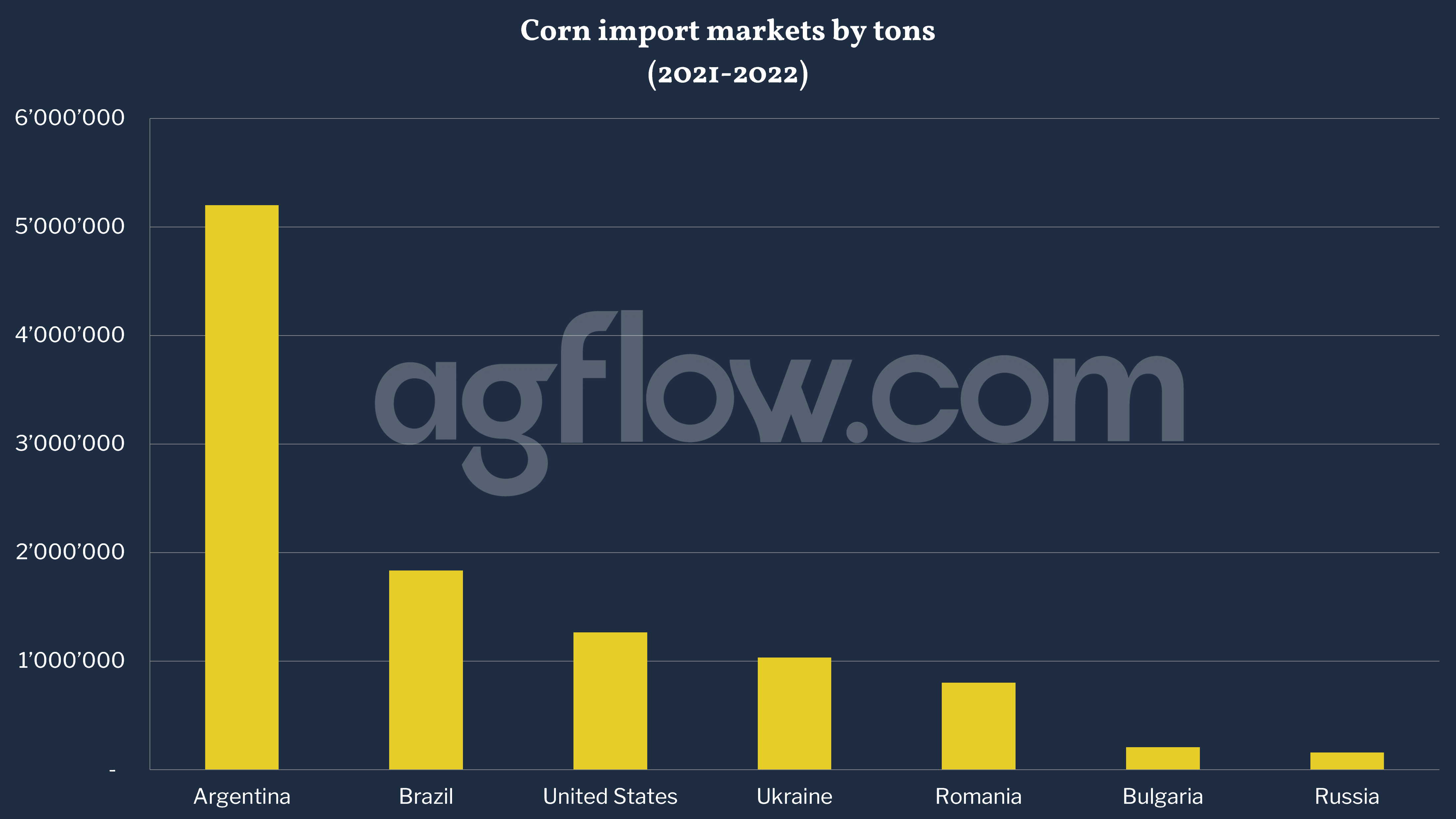South Korea Demands More Feed Corn
Reading time: 2 minute
Corn production is minimal in Korea and accounts for less than one percent of total consumption. The MY 2021/22 (October 1- September 30) Corn production estimate remains unchanged from the previous FAS/Seoul forecast at 78,000 tons. MY 2020/21 Corn production was 91,800 tons, up 20 percent from the prior year, due to higher yields. Planted area for MY 2022/23 is expected to remain at 15,200 hectares, and production is forecast at 79,000 tons based on average yields over the previous five years.
MY 2021/22 Corn consumption estimate is revised, down 4 percent from the previous forecast to 11.3 million tons. MY 2020/21 Corn consumption was 11.8 million tons, consisting of 9.43 million tons for feed and 2.34 million tons for food, seed, and industrial (FSI) purposes.
MY 2022/23 Corn consumption is forecast at 12.0 million tons, up 6 percent from the current marketing year estimate, consisting of 9.6 million tons for feed purposes and 2.4 million tons for FSI purposes. Feed Corn consumption is forecast to increase due to anticipated growth in animal inventories and the anticipated recovery of feed Corn availability from Ukraine. FSI Corn consumption is expected to remain at 2.4 million tons to meet stable demand for high fructose Corn syrup (HFCS) and other Corn products from the Korean food industries.
Korean feed buyers contracted 0.5 million tons of feed Corn supply from Ukraine before the war for deliveries in February through June this year. Some contracts will likely be replaced with alternative origins (including the US and South America). However, the overall supply of feed Corn in Korea is still expected to decline during the remaining months of the year.
Greater demand for feed grains during this year from the anticipated recovery of animal inventories is expected to be met by increased consumption of feed wheat. According to the grain traders, the war in Ukraine is expected to have less impact on feed wheat supply in Korea because alternative suppliers will likely be able to replace the reduced supply.
As per AgFlow data, Argentina was the largest import market of Korean Corn with 5.2 million tons in 2021-2022, followed by Brazil (1.8 million tons), the US (1.2 million tons), Ukraine (1 million tons), and Romania (0.8 million tons). The country imported 10.5 million tons of Corn.

Korean Feed & Food Corn
Compound feed consumption is forecast to reach 21.3 million tons in MY 2022/23 as livestock (cattle, swine, and poultry) inventories expand to meet increased consumer demand for meat products. This estimate depends on an assumption that Corn will continue to be the primary ingredient used in compound feed with a 45 percent inclusion rate (9.6 million tons), followed by feed wheat (1.3 million tons). The 2021/22 compound feed production is forecast at 21.1 million tons, up one percent from the previous year.
Korean Corn processors use Genetically Engineered (GE) Corn, non-biotech Identity Preserved (IP) Corn, and conventional Corn to produce Corn starch, HFCS, and Corn flour. GE Corn imported from the United States and South America is used for starch production for industrial purposes such as paper sizing and glue.
Non-GE IP Corn imported from the United States and Brazil and conventional (non-GE) Corn imported from Eastern European countries, South Africa and Australia is used for Corn starch and Corn flour. The perceived public concern over biotechnology continues to influence imported processing Corn decisions, especially Corn used in products intended for human consumption.
Many food processing companies are reluctant to use ingredients derived from biotech Corn to avoid these perceived public concerns. Some food processing companies utilizing Corn starch products are sourcing ingredients imported from China since these items are reportedly derived from non-biotech Corn.
Other sources: https://www.usda.gov
Free & Unlimited Access In Time

